QualcommSnapdragon
Latest

Qualcomm's latest chip will give midrange phones a gaming boost
Flagship features continue to trickle down from $1,000 phones to their more-affordable brothers, and the same is happening with the chips that power them. Qualcomm unveiled new midrange mobile CPUs today that offer advanced features typically reserved for high-end phones, like AI processing and gaming enhancements. The Snapdragon 730, 730G and 665 are supposed to show up in (presumably cheaper-than-flagship) devices in mid-2019, meaning we may have a slate of budget-friendly handsets to look out for.
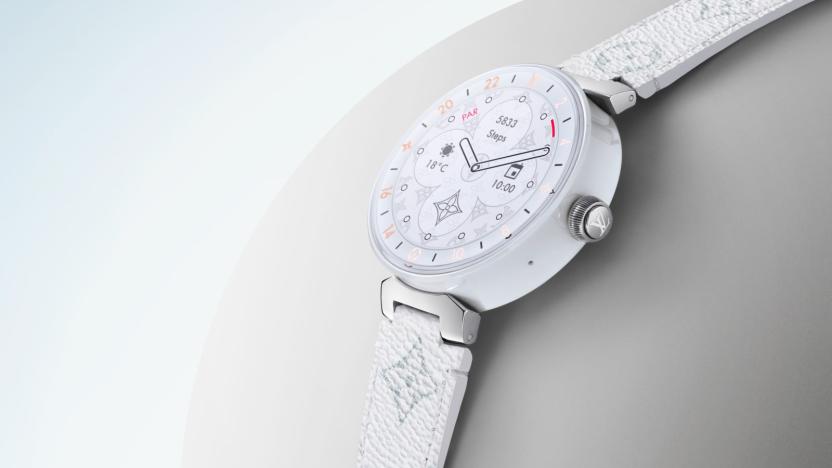
Louis Vuitton's pricey smartwatch gets a big upgrade for 2019
Louis Vuitton has upgraded its extravagant take on Wear OS with Qualcomm's new chipset for wearables. The new LV Tambour Horizon smartwatch is now powered by the Snapdragon Wear 3100, the same chip that Qualcomm worked on for years with help from Google. Since one of the new chip's features is better battery life, the upgraded Tambour can now last one full day and up to five additional days if you're just using it to display time.
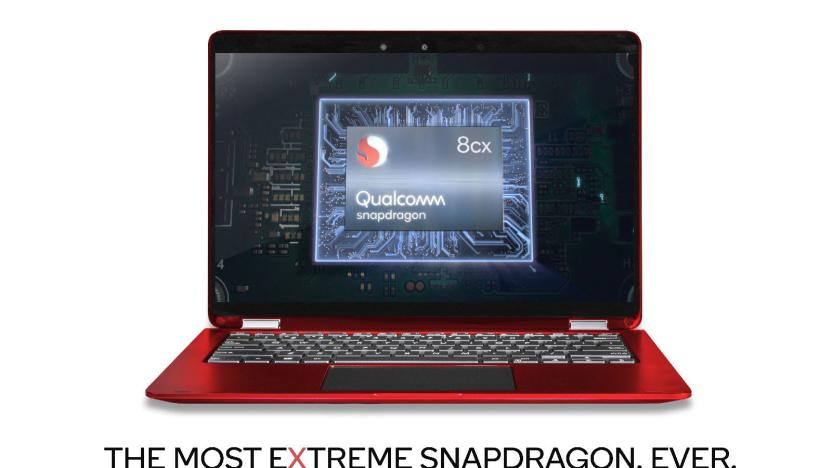
Qualcomm's new PC processor promises 'extreme' power
It's been a year since we've seen the first devices running Windows on Snapdragon, and Qualcomm is continuing its quest to make a capable ARM-based processor for PCs. On the third of its three-day tech summit in Hawaii today, the company unveiled the Snapdragon 8cx. It's Qualcomm's second made-for-Windows chipset, but one that the company says offers significantly better performance and energy efficiency. So much more, in fact, that the "x" in 8cx stands for "extreme."

Qualcomm’s latest Snapdragon Wear chip could revitalize smartwatches
Don't give up on smartwatches just yet. Qualcomm has finally unveiled its latest made-for-wearables processor, which it first teased at Google I/O earlier this year. The new chipset is called the Snapdragon Wear 3100 and succeeds the existing 2100 model you'll find in many smartwatches currently on the market. The 3100 features revamped architecture that should provide the long-lasting and always-ready performance that wearables have been missing for years. The new Wear 3100 platform also integrates with Google's Wear OS and features three new software modes that are designed to maximize battery life and utility in a variety of scenarios.
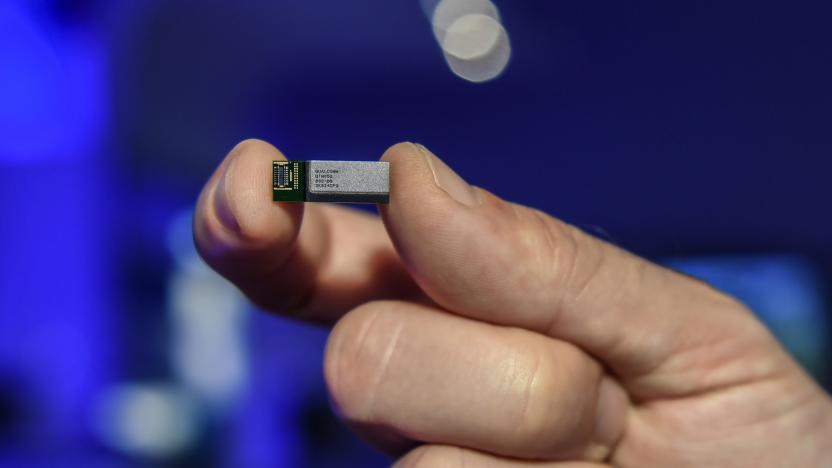
Qualcomm's 5G antennas are primed for next year's phones
One of the biggest challenges in tapping millimeter waves (mmWaves) for 5G is overcoming signal interference. Because they're easily disrupted by something as simple as someone walking in between a transmitter and receiver, mmWaves require technological finesse to be harnessed reliably. To that end, Qualcomm today unveiled what it says is the world's "first fully-integrated 5G NR mmWave and sub-6 GHz RF modules for smartphones and other mobile devices." These are the QTM052 mmWave antenna module family and the QPM56xx sub-6 GHz radio frequency (RF) module, and they'll pair with the company's previously announced Snapdragon X50 5G modem -- making next-gen phone networks a reality very soon.
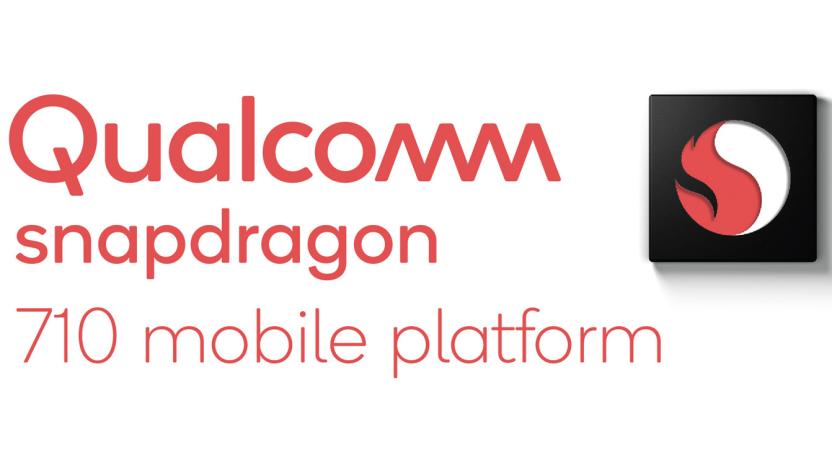
The Snapdragon 710 will add flagship features to mid-range phones
Expensive flagship phones won't be the only way for you to play with advanced features like AR Emoji, Animoji and Face ID much longer. Qualcomm is making it easier for companies to create mid-range smartphones that pack those functions by launching a new mobile processor. The Snapdragon 710 will come with a multi-core AI Engine and support neural network processing, as well as image signal processors and graphics units that are typically found in higher-end chipsets. The 710 is the first of the 700-series, which was announced at MWC this year, and will sit above options like the 600- and 400-ranges but below top-tier chips like the Snapdragon 845.
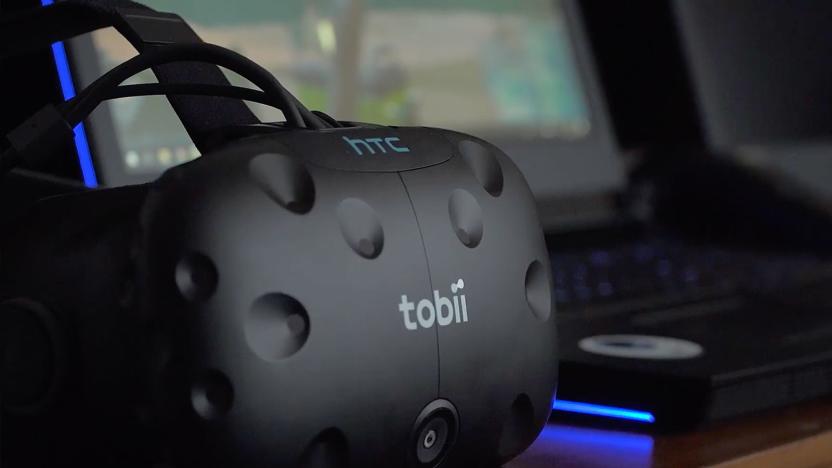
Tobii's EyeCore will make next-gen VR experiences even more immersive
VR and AR may be the next big thing immersive experiences, but so far, their user interfaces have been anything but intuitive. Conventionally, head-mounted displays have operated under the assumption that its users are owls: their eyes are locked in their skulls, facing forward requiring them to use their noses as VR cursors. Tobii is working to change that by integrating eye tracking into the next generation of head-mounted displays.
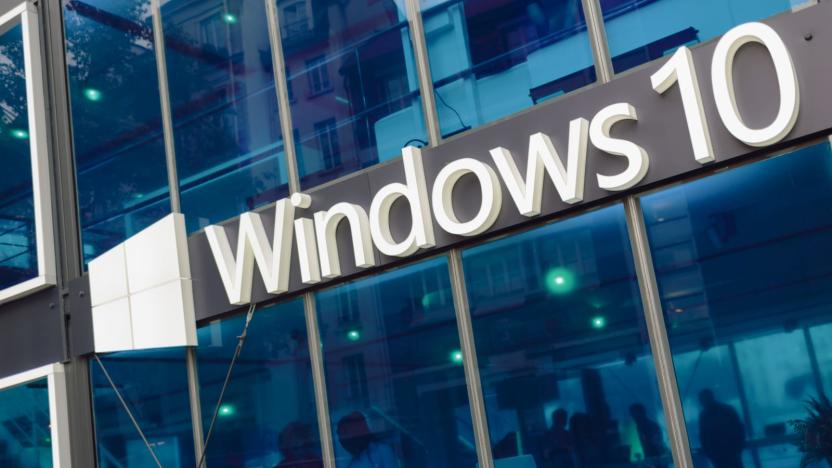
Microsoft inadvertently outlines the limits of Windows 10 on ARM
Microsoft began introducing ARM-powered Windows devices this past holiday season, and now we have more information on the limitations of these devices. Thurrott noticed that Microsoft published a list of limitations on the ARM version of Windows 10. It appears to have been inadvertant, as the document has since been removed, but The Verge noted that cached versions of the article are still available.
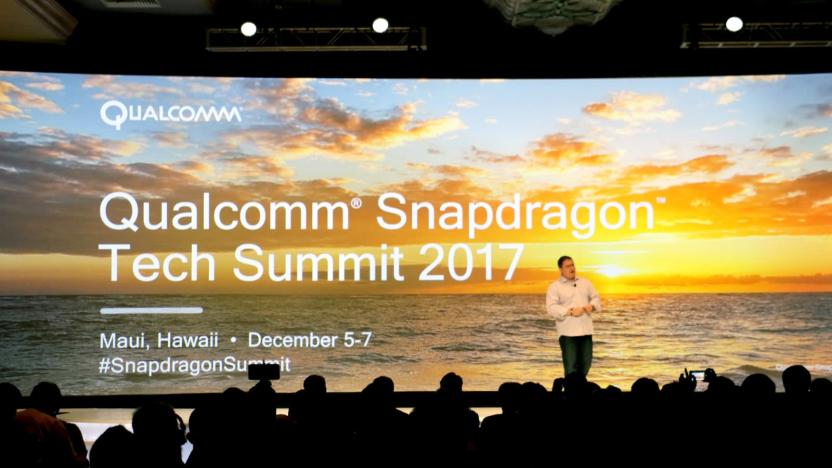
Why Qualcomm’s Tech Summit this week mattered
Qualcomm had so much news to share this year that it decided to throw a three-day "Tech Summit" in Hawaii for hundreds of press and analysts. In addition to unveiling the latest generation of its high-end mobile processor, Qualcomm also announced new Snapdragon-powered laptops from HP and ASUS, a new dedicated Hi-Fi audio DAC and a partnership with AMD. Speaking of partnerships, many of the companies that work with Qualcomm also attended the event to discuss the future of technologies like AI, 5G, AR and VR.
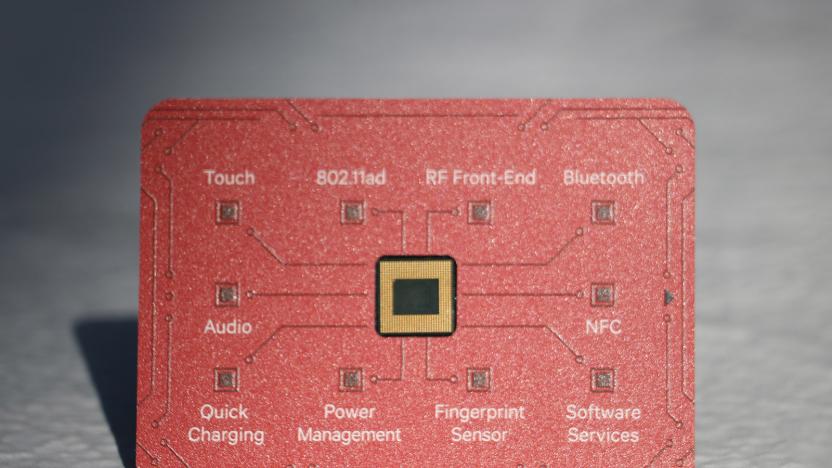
Qualcomm's Snapdragon 845 doubles down on cameras and AI
The next-generation mobile processor that you'll most likely find in many of next year's major flagships is here. At its second annual tech summit today, Qualcomm unveiled the Snapdragon 845, which is its latest "premium" mobile CPU. The chipset will retain the same 10nm footprint as its predecessor, but feature revamped architecture that brings about new features like 4K HDR video capture on smartphones and improved AI processing. That's in addition to the typical performance and power-consumption upgrades we see each year. Qualcomm said it's focusing on AI, immersion, security, connectivity and performance with the new chipset.

Microsoft’s vision for connected PCs gives me hope for Windows
I wasn't expecting a major news announcement from Microsoft's Computex keynote this year -- not on the heels of events in New York, Seattle and Shanghai. What else could there possibly be to unveil after the Surface Laptop, Surface Pro and new Windows versions and updates? Turns out, Microsoft was saving the best for Taiwan. It showed off plans for its vision of "always-connected PCs", teaming up with Qualcomm and Intel to make future devices work the same way whether you are at home or on the go. These computers will combine the best features of smartphones, like constant connectivity, all-day battery life and portable designs, to deliver a reliable, powerful and always-accessible Windows 10 experience.
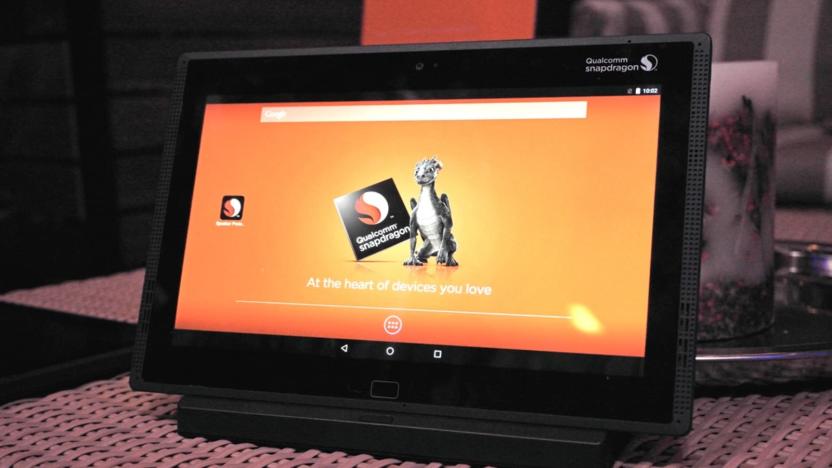
Qualcomm's Quick Charge 4+ is both faster and cooler
We all want more power with less charging on our mobile phones. Qualcomm, the maker of the Snapdragon 835 processor, has long been working to provide lower power usage and faster battery charging. The current Quick Charge 4 technology, announced in November of last year, promises five hours of charge in five minutes, a 20 percent improvement in charging speed and 30 percent improvement in efficiency than the previous Quick Charge system. The company announced even more improved specs today: the Quick Charge 4+ system, which the company promises is up to three degrees cooler, up to 15 percent faster and 30 percent more efficient than Quick Charge 4. The first smartphone to use this new charging technology will be the Nubia Z17 from Chinese phone maker ZTE.
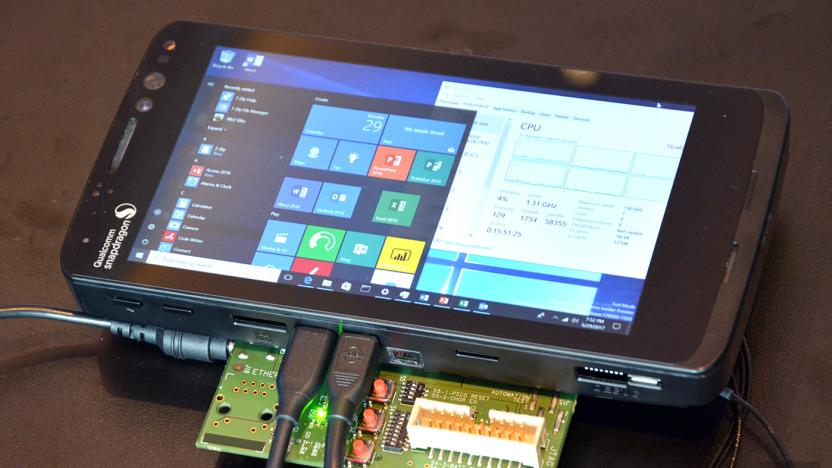
Windows on Snapdragon is key to making PCs more connected
Looks like Microsoft isn't done with its world tour. After a series of events in New York, Seattle and Shanghai, the company has yet another big announcement to make in Taiwan here at Computex 2017. And in keeping with the theme of bringing Windows everywhere, Microsoft is working with Qualcomm and Intel to deliver "Always Connected PCs" that are constantly online, have long-lasting batteries and portable designs.

With the Snapdragon 602A, Qualcomm looks to improve the connected car
In addition to announcing a version of its Snapdragon 800 processor tweaked for your home theater, Qualcomm is introducing a chip made specifically for in-car entertainment. The Snapdragon 602A, unsurprisingly, shares several specs with the Snapdragon 600 chip seen in mobile devices, but it's made to meet the automotive industry's requirements for temperature, longevity and more. It also packs in plenty of additional tech, which we'll get to in a minute. Qualcomm's been involved in the connected-car space for about a decade, with 3G and 4G modules to show for it. Though it offers Gobix 9x15 3G/4G LTE modules along with WiFi and Bluetooth, the 602A is ambitious on more than just the connectivity front: The chip will initially power infotainment -- serving multiple video streams to numerous screens in your car, for instance -- but will pave the way for more advanced connectivity and safety features. For example, facial-recognition support could let you start the car by looking in a camera, and gesture recognition could enable a smarter backup cam. As with the Snapdragon 802, the goal behind the 602A is to bring the dynamic app experience of smartphones and tablets to a different environment. This means improved 3D navigation, cloud-based software and integration with mobile devices, among many other things. Support for both Android and QNX gives carmakers options for building their own infotainment systems that comply with the automotive industry's requirements, as well. Qualcomm hasn't mentioned a timeframe at this point, but we have it on good authority that such an announcement is coming this week.

LG E960 Mako surfaces in photos, may be the future Nexus phone (update)
Rumors have been swirling that LG will get its first crack at a Nexus phone this year. If there's any merit to that claim, we might have just received an early peek. An XDA-Developers forum goer has posted a collection of photos for the E960, which appears to be a variant of the Optimus G -- until you realize that it's using software navigation keys, doesn't quite resemble the international or AT&T Optimus G models and is oddly badged as the "Full JellyBean on Mako." Given that Google likes to name its reference Android phones after fish, it doesn't take much to suspect that a device codenamed Mako is more likely to become a Nexus than an Optimus. The completely stock but unreleased Android 4.1.2 build of Jelly Bean certainly helps fuel the rumor mill. If the E960 does carry Google's honorific, though, some may be in for a disappointment knowing that the model that reached the FCC last week doesn't have LTE. We won't rule out that this is one of multiple Nexus variants, if it's a Nexus at all, but the 3G edition's filing hints that Google may not rock the boat for its 2012 flagship. Update: More images have surfaced, this time with the anti-spy casing removed from the back of the phone. Click past the break for more.

HTC DLX specs purportedly slip, stuff Snapdragon S4 Pro and 12MP camera into a 5-inch frame
Talk of HTC's rumored, giant DLX has veered between the plausible and not-so-plausible. We might just toss the newest tip into that former category. Football4PDA, who's developing a reputation for uncanny accuracy in leaks, has posted what's claimed to be the core specifications of HTC's first phablet. The DLX would mirror earlier expectations of a 1.5GHz Snapdragon S4 Pro and a 5-inch, 1080p display, but push past the OneX+ in more ways than just physical heft: the extra space might just help it afford 1.5GB of RAM, a 12-megapixel rear camera, a 2-megapixel front shooter and a larger-still (but non-removable) 2,500mAh battery. We're not as much of a fan of the threadbare 16GB of storage that's supposedly in the cards, though, even with a new Android 4.1.2 build in store. Provided that there's more to the story than just 136 characters, the real point of contention is the ship date -- having mostly cleared the decks between its September event and its One X+ introduction, HTC hasn't left much time for the possibly Verizon-bound flagship to show its face.

Samsung P500 and i915 tablets for Sprint and Verizon, Galaxy Note II for Sprint reach the FCC (update: Note II for US Cellular as well)
When it rains, it pours. As if to clear the decks, Samsung has passed three devices through the FCC's scrutiny at the same time. Two, the SPH-P500 and SCH-i915, are LTE-equipped tablets respectively headed to Sprint and Verizon with a dash of mystery; their label images imply a pair of Galaxy Tab 2 variants, but both have previously been spotted in as yet unverified benchmarks that allude to much faster Snapdragon S4 processors instead of the Tab 2's TI chips. The SPH-L900's dimensions and dual-mode support make for a safer bet, pointing to what's likely the Galaxy Note II for Sprint. We're less concerned with the hardware details so much as when everything ships -- although we may get a clearer picture of the Sprint Galaxy Note II's fate around October 24th, the tablets aren't linked to any kind of public schedule, official or otherwise. Update: Not long after Sprint's Galaxy Note sequel arrived in the FCC, US Cellular's flavor -- the SCH-R950 -- also made it through the federal approval process.

Sony Xperia tipo and tipo dual reach the US in unlocked form, give Americans a taste of dual SIMs
Few of us who live outside of Asia or Eastern Europe know the potential convenience of a dual SIM phone. Own one and you can globetrot, or else keep separate home and work lines without the bulk of an extra device in the pocket. Sony is gambling that enough Americans have that multi-line desire by selling the Xperia tipo dual and its regular, single-SIM counterpart in the US as unlocked GSM models. Neither of the Android 4.0 phones is what we'd call a powerhouse with the same 3.5-inch screen, 3.2-megapixel camera and 800MHz Snapdragon inside, but both can latch on to HSPA 3G on AT&T, refarmed T-Mobile coverage and 2100MHz carriers abroad, even if the single-SIM tipo curiously has 900MHz 3G support that the tipo dual lacks. It's undoubtedly price that Sony is counting on more than anything: at respective contract-free prices of $180 and $190 for the tipo and tipo dual, the pair of Xperias may be sold most often as travel-only phones for the jet set.

Qualcomm reveals quad-core Snapdragon S4 Play processors, ramps up entry smartphone speeds
Don't think Qualcomm is limiting its quad-core processors to superstar phones. The Snapdragon S4 Play line is growing to include the MSM8225Q and MSM8625Q, parallels to the existing two Play chips that bring four cores to entry-level devices. Besides the speed improvements that you'd expect from all that extra parallelism, the Q variants support the extra bandwidth of low-power DDR2 (LPDDR2) memory and can handle both 720p displays and movie-making. Neither is quite an all-encompassing solution, although the two will cover the bases for much of the starter demographic: while local wireless such as Bluetooth, FM radio and WiFi have to remain separate from the main processor, the two newcomers manage to pack either single-mode UMTS 3G (in the 8225Q) or dual-mode CDMA and UMTS (in the 8625Q) for their cellular fix. Along with the already promised, China-focused S4 Plus MSM8930, test samples of the faster S4 Play editions will be ready before the end of the year, with shipping phones on the way in early 2013 -- just in time to go head-to-head with a similar push by MediaTek to make quad-core the norm for a much larger slice of the population.

Pantech Vega R3 packs Snapdragon S4 Pro, 5.3-inch screen into one hand
If there's one thing that defines the phablet, it's not hand portability -- what's on the market usually demands something of a stretch. Pantech wants to keep our grip at least slightly in check through its imminent Vega R3. The Android phone's 5.3-inch, IPS-based LCD isn't what we'd call modest, but it's framed by an extra-thin bezel that Pantech claims is still comfortable in one hand. The R3 will be powerful, no matter how you hold it. It touts the same quad-core Snapdragon S4 Pro we just saw in the LG Optimus G along with 2GB of RAM, a 13-megapixel camera and a 2,600mAh battery that can top up 100 minutes. South Koreans can pick up the Vega R3 from one of their three major carriers on September 25th. Sadly, we're not expecting an American variant of the design given an emphasis on cheaper and smaller Pantech models in the US.






